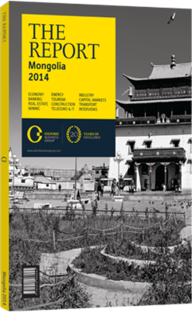OBG talks to Jim Dwyer, Executive Director, Business Council of Mongolia

Interview: Jim Dwyer
How might the new investment law affect foreign direct investment (FDI) in 2014? Is the new law enough to bring back investors’ confidence?
JIM DWYER: Foreign investment in Mongolia is key, as it should be a major part of the country’s development in coming years. The previous investment law dried up and stopped new foreign investments coming into the country. FDI levels, which had hit $5bn in 2011, dropped dramatically in 2012 and halved in 2013.
The only investment for Mongolia now, therefore, is to continue with Rio Tinto’s Oyu Tolgoi mine. There are currently no further significant or important transactions to speak of, and so the big question at this point is, when will FDI become robust again? It would be hard to say we will see a significant improvement in 2014. The new investment law was enacted on November 1 2013, and will make it easy and quick to register and do small transactions. But it will not bring back the large international investors who have been disappointed in the last year – at least not immediately. This will remain the case until they see demonstrative evidence that things have changed.
The first thing for the Mongolian government to do, therefore, is to finalise significant projects. Investors need to see phase two of Oyu Tolgoi moving forward. They need to see Tavan Tolgoi, a huge untapped coal deposit, moving forward; they must see CHP5, a needed power plant upgrade, make progress; and they need to see the coal-to-liquid plant from MCS, Mongolia’s biggest conglomerate, and POSCO, a South Korean steel and power giant, make headway. These are all important projects, and are by no means confined to just the mining sector.
Should these projects move meaningfully in the right direction, Mongolia will start gradually building momentum again and regaining confidence in its markets. Mongolia is certainly capable of once more becoming a top investment destination from 2015 onwards. We are now at the beginning of the next wave of new foreign investments coming into Mongolia.
To what extent is the heavy involvement of politics in Mongolian business limiting the country’s growth? What can be done to separate the two?
DWYER: There should be a clear separation between government and the private sector, which isn’t the case now in Mongolia. The government’s focus should be on regulations and policies, and on collecting taxes and royalties. This would greatly increase government revenues, and attract more foreign investment from companies that could partner with local businesses.
One help in this regard was the president’s announcement in late 2013 that he aims to privatise one-third of the country’s state-owned enterprises (SOEs). Though it will surely take time, that is a step in the right direction. More than half of SOEs are currently losing money, as many do not have managerial skills. Many of them are run by politicians with conflicts of interest, when they should in fact be run by skilled managers who have experience in the private sector. How the president’s initiative will evolve remains to be seen, but it is undeniable that it will be very beneficial to the development of Mongolia’s economy.
With the larger part of GDP growth originating in Ulaanbaatar, how might economic activity be fostered in areas other than the capital city?
DWYER: From a mining standpoint, the mines and other elements of that supply chain are all outside of Ulaanbaatar. So we will gradually see more economic development and activity in the communities around some of these larger mines. Part of what is needed, however, is more connectivity. These remote areas need roads, railways, and airports so that traffic can flow in and out. This would affect several sectors in Mongolia, such as tourism, whose “adventure” tours are quite unique in this country. Developing the agriculture sector will be another major component of economic growth in remote areas. There is real export potential in sectors such as meat and cashmere, opportunities that we must pursue further and invest in.
You have reached the limit of premium articles you can view for free.
Choose from the options below to purchase print or digital editions of our Reports. You can also purchase a website subscription giving you unlimited access to all of our Reports online for 12 months.
If you have already purchased this Report or have a website subscription, please login to continue.

